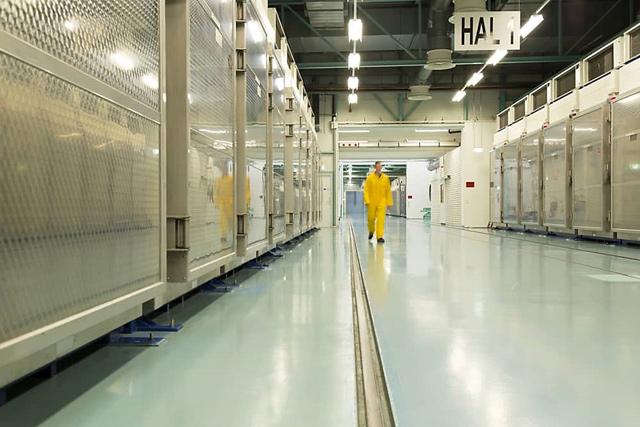- International News
- Tue-2021-01-05 | 03:08 pm

Nayrouz News Agency :
Iran agreed with major world powers in 2015 to restrict its nuclear programme in return for the lifting of punishing international sanctions.
But in 2018, US President Donald Trump pulled the United States out of the agreement and reimposed sanctions, prompting Iran to roll back its own commitments.
Despite consistent denials from Tehran, the US and Israel continue to accuse Iran of seeking a nuclear weapon.
And on Monday Iran said it has started enriching uranium again to 20 per cent purity.
Here is a look back at the deal:
Tough negotiations
Negotiations start in June 2013 between Iran and the five permanent members of the UN Security Council (Britain, China, France, Russia and the United States) plus Germany.
The final deal is reached in July 2015, seemingly ending a 12-year dispute over the Iran nuclear issue.
The aim
The accord's goal is to make it practically impossible for Iran to build an atomic bomb, while allowing it to pursue a civilian nuclear programme.
Tehran pledges to reduce its nuclear capacities for several years, capping its enrichment of uranium at 3.67 per cent — sufficient for power generation, but far below the more than 90 per cent required for a nuclear weapon.
Iran agrees to slash the number of its enrichment centrifuges from more than 19,000 to 5,060, for a decade.
It also agrees to modify its heavy water reactor in Arak to prevent it using plutonium for military use.
The deal comes into effect in January 2016.
Inspectors, sanctions relief
The International Atomic Energy Agency is charged with carrying out inspections to ensure Iran is keeping to its side of the bargain.
The accord paves the way for a partial lifting of international sanctions on Tehran, opening the door to foreign investors.
However, UN embargoes on the sale of conventional arms and on ballistic missiles to Iran are maintained up to October 2020 and 2023 respectively.
The three European signatories, Britain, France and Germany, have opposed lifting the embargo on conventional arms, coming into line with Washington.
But the powers insisted they remained committed to the 2015 nuclear deal, and said UN sanctions should not be reimposed.
US exit
Investment starts to flow into Iran after the nuclear deal. But in May 2018, Trump pulls the US out of the agreement, calling it "rotten".
In August and November, Washington reimposes sanctions, particularly targeting Iran's oil and finance sectors.
Iran rolls back
Iran in May 2019 announces a first step back from the accord.
It says the European Union must help it circumvent US sanctions and sell oil or it will abandon more terms.
After exceeding the deal's uranium enrichment cap and the allowed quantity of heavy water, it says in January 2020 it will ignore the limit on its number of centrifuges.
With Trump in his final days at the White House, Tehran announces on Monday that it has started enriching uranium to 20 per cent at its Fordow facility.
The EU warns that Iran's move would be a "considerable departure" from Tehran commitments under the 2015 nuclear deal.













